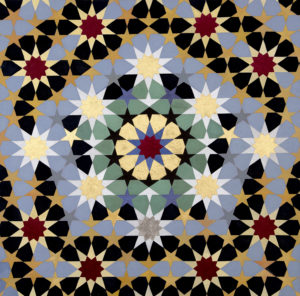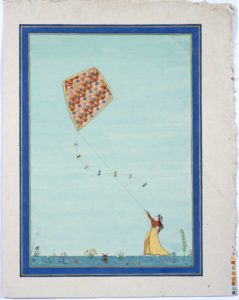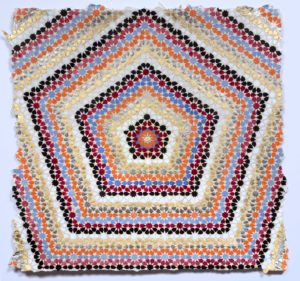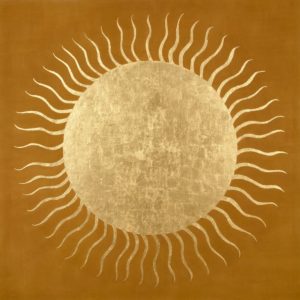Elisabeth Deane
Elisabeth Deane is a painter who uses ancient traditional techniques to make work with an entirely contemporary aesthetic. Elisabeth’s colours and detailed brushwork are inspired by Islamic geometry and the miniature painting traditions of India and Iran.
Learning from the Masters in India While studying at the University of Cambridge in 2011, Elisabeth won the Helga Todd Foundation Award which gave her the opportunity to spend two months working in Santiniketan, West Bengal. It was this experience that led to her initial interest in the artistic traditions of India. While in Santiniketan, Elisabeth was also inspired by the works of Bengali polymath Rabindranath Tagore – both his writings, including the beautiful verse of Gitanjali, and his paintings. Elisabeth has since returned to India in 2013 and in 2018, studying under Master miniature painters in Rajasthan, improving her knowledge of stone and plant-based pigments while also enjoying ‘chai breaks’ with their aromas of cardamom and ginger.
Elisabeth learnt much of her craft at the Prince’s Foundation School of Traditional Arts where she completed an MA in 2017 and also met her husband Jethro Buck – a fellow artist and miniature painter. Elisabeth has obtained degrees in History of Art (BA), and the Arts of Africa, Oceania and the Americas (MA) from the University of East Anglia and a PGCE in Art & Design from the University of Cambridge. While studying at the Prince’s Foundation School of Traditional Arts, Elisabeth became an Albukhary Foundation scholar and was also awarded a bursary from The Temple Gallery, London. In 2018, she was a finalist in the Asian Art in London Emerging Artist Award. She has exhibited in a number of group exhibitions nationally and internationally.
Elisabeth was thrilled to exhibit new work at Grosvenor Gallery, London in December 2023. Colour, Harmony and Natural Pigments “My aim is to yield delight and joy through the geometric arrangement of colour”. Many of the colours are stone based – lapis lazuli, malachite and cinnabar – and all have been sourced from the earth and then ground painstakingly by hand. “I am interested in intricate patterns and colour relationships. Natural pigments are beautiful. I’m aiming for that right combination of colours which when brought together create vibrations, ones that sing.” The abstract geometric nature of much of Elisabeth’s work represents both the simple and the universal, the micro and the macro and the interplay between these dichotomies.




